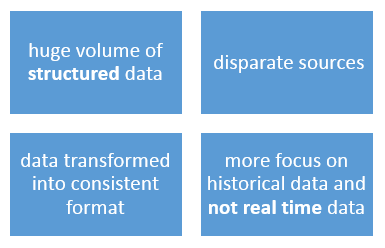In my future
career role of an Information Security Manager, I aspire to work in the field
of Information Security Management. My responsibilities will include coordinating and executing security policies and
controls, as well as assessing vulnerabilities within the company. I will also
be responsible for data and network security, security systems management, and
security violation investigation. One of the framework that closely relates to these is the international standard of ISO/IEC 27001.
ISO/IEC 27001 is the best-known standard
in the family providing requirements for an information security management
system (ISMS). An ISMS is a systematic approach to managing sensitive
company information so that it remains secure. It includes people, processes
and IT systems by applying a risk management process. It can help small,
medium and large businesses in any sector to keep information assets secure.
How is it useful?
More and more organizations today are
embracing online opportunities to promote their business and establish their
position in the marketplace through the use of mobile devices and apps, not to
mention social networking sites. While doing so, these companies are greatly increasing
the number and sophistication of threats targeted at them. Today's companies
have no choice but to protect themselves by implementing the ISO/IEC 27001
standard.
ISO/IEC 27001 provides a management
framework for assessing and treating risks, whether cyber-oriented or
otherwise, that can damage business, governments, and even the fabric of a
country's national infrastructure.
How will it impact my role?
As an
Information Security Manager, my chief responsibility will be establishing,
implementing and continually improving the information security management
system (ISMS) and act as an interface between the top management and the
operational business areas. Knowledge about the key elements of the ISO/IEC
27001 standard will help me to correctly interpret and implement security
measures in a practice oriented manner. The compliance of ISO/IEC 27001 will
help me achieve the following tasks:
Technical:
· Approve appropriate methods for the protection of mobile devices, computer networks and other communication channels
· Propose authentication methods, password policy, encryption methods, etc.
· Define required security features of Internet services
· Define principles for secure development of information systems
· Review logs of user activities in order to recognize suspicious behavior
Communication:
· Define which type of communication channels are acceptable and which are not
· Prepare communication equipment to be used in case of an emergency / disaster
Human resources management:
·
Perform background verification checks
of job candidates
·
Prepare the training and awareness plan
for information security
·
Perform continuous activities related
to awareness raising
·
Performing induction training on
security topics for new employees
·
Propose disciplinary actions against
employees who performed the security breach
Relationship with top management:
·
Communicate the benefits of information
security
·
Propose information security objectives
·
Report on the results of measuring
·
Propose budget and other required
resources for protecting the information
·
Notify top management about the main
risks
·
Advise top executives on all security
matters
Risk management:
· Teach employees how to perform risk assessment
· Propose the selection of safeguards
· Propose the deadlines for safeguards implementation
Asset management:
·
Maintain an inventory of all important
information assets
·
Delete the records that are not needed
any more
·
Dispose of media and equipment no
longer in use, in a secure way
Incident management:
·
Receive information about security
incidents
·
Coordinate response to security
incidents
·
Prepare evidence for legal action
following an incident
·
Analyze incidents in order to prevent
their recurrence
Business continuity:
·
Coordinate the business impact analysis
process and the creation of response plans
·
Coordinate exercising and testing
·
Perform post-incident review of the
recovery plans
Conclusion
For me to be an efficient Information Security Manager, it is imperative that I know what constitutes a security compliance standard and how to implement it in an organization. ISO/IEC 27001 is one such comprehensive security standard that will help both me and my company to maintain the confidentiality, integrity and availability of all our information and assets, as well as, protect against any potential cyber-attacks.
Sources:
http://www.iso.org/iso/home/standards/management-standards/iso27001.htm
http://www.itgovernance.co.uk




.jpg)






















